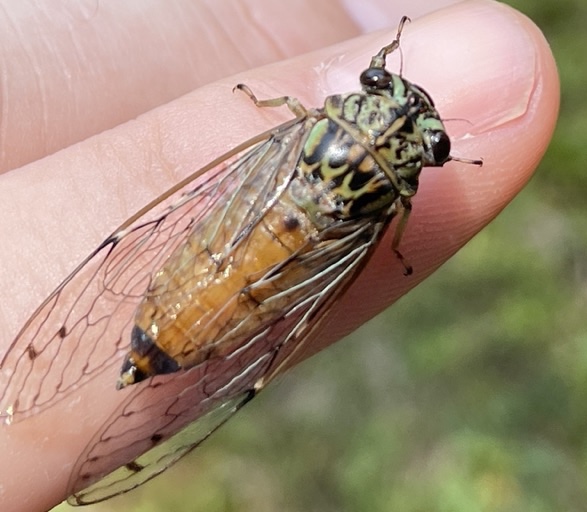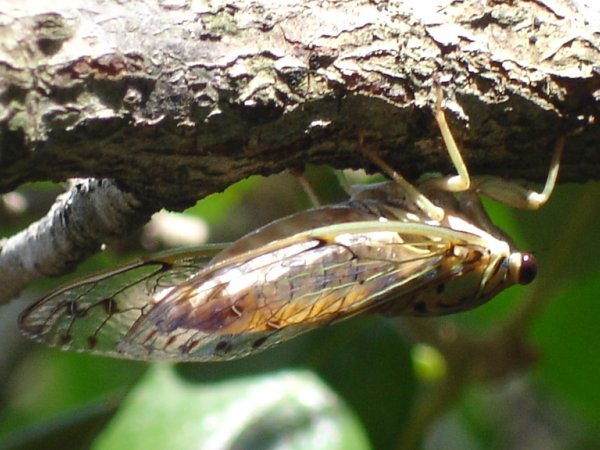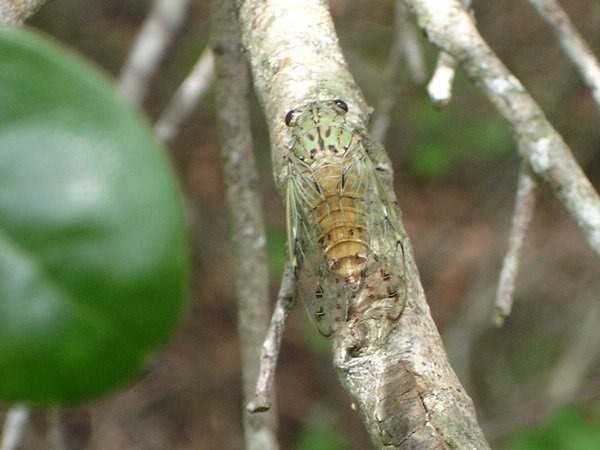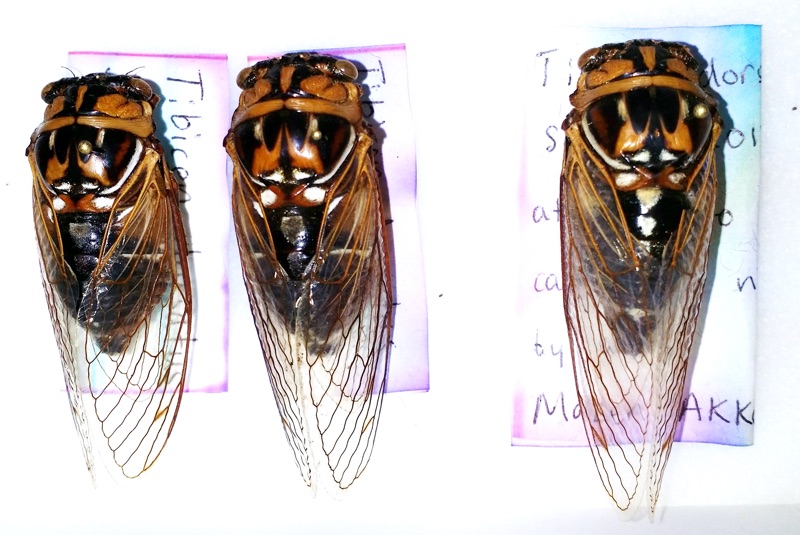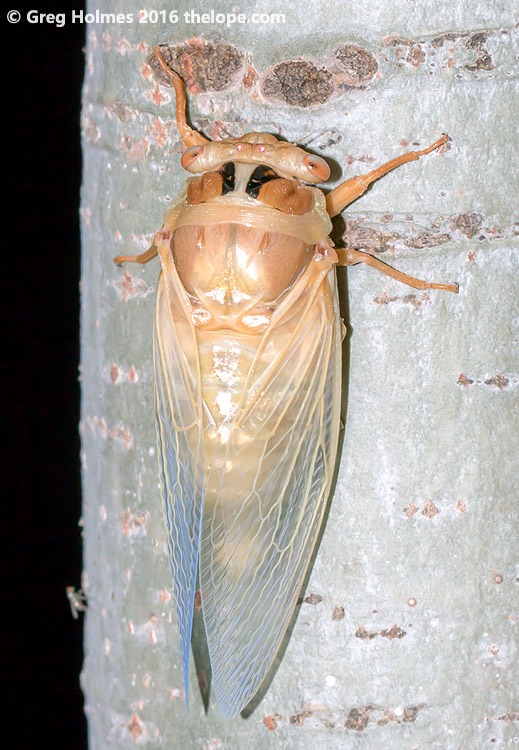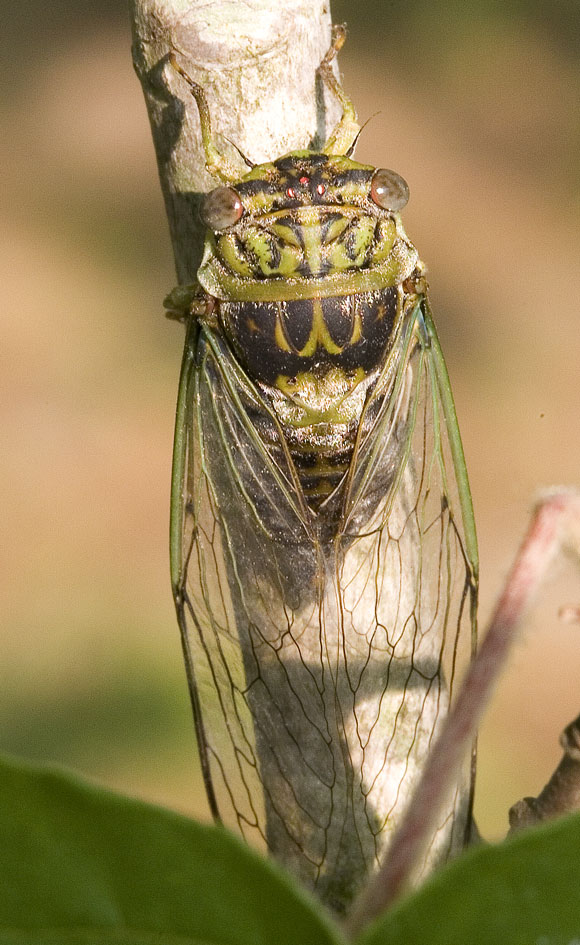Okanagana rimosa rimosa (Say, 1830) aka Say’s Cicada.
Image
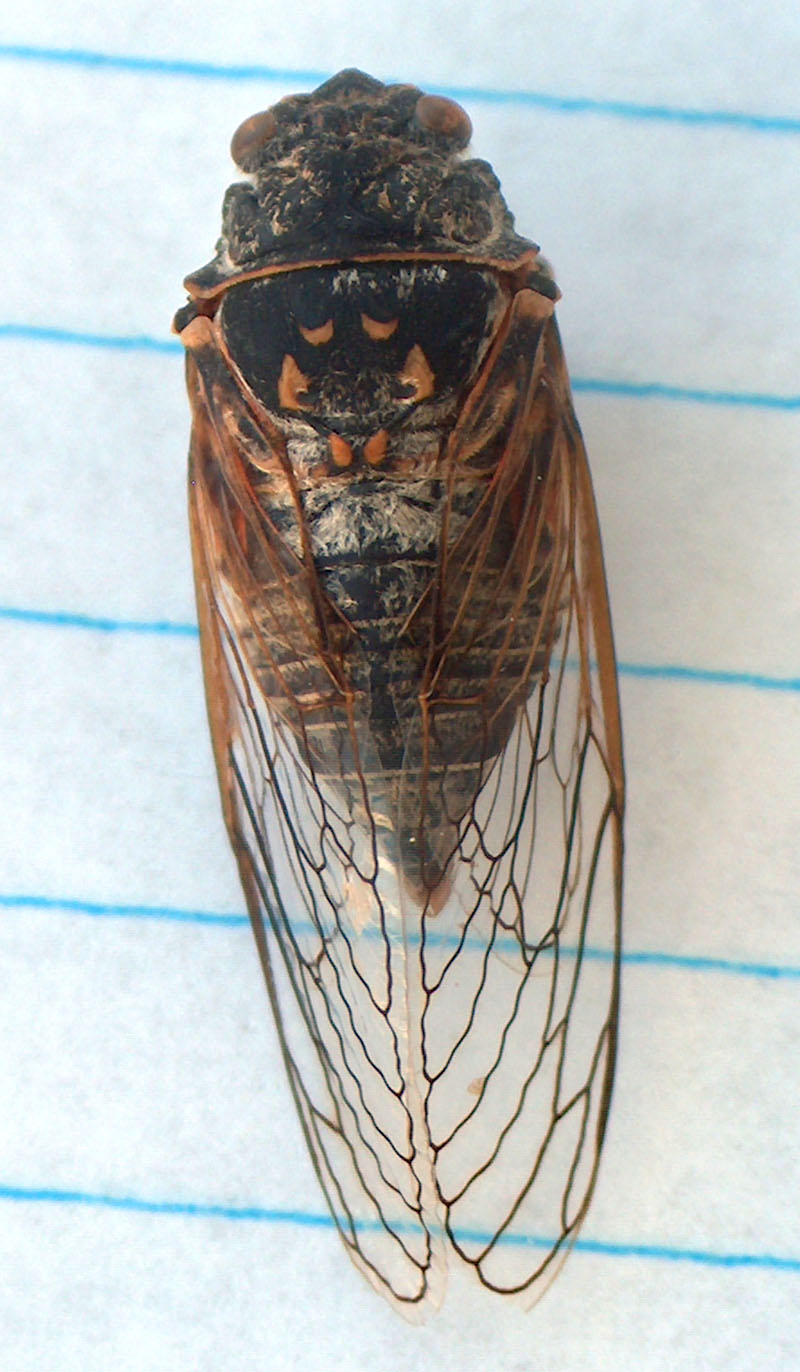
Photo credit: Okanagana rimosa by Natasha.
All Okanagana rimosa rimosa information & images on cicadamania.com.
Song type: Call
Source: ©Insect Singers | Species: O. rimosa rimosa
Video Playlist
Name, Location and Description
- Cicada Name: Okanagana rimosa rimosa (Say, 1830)
- Short Name: O. rimosa rimosa
- Common Name: Say’s Cicada
- When: May-July. Peak in June.
- Where it is found: AB, BC, CA, CT, ID, IL, IN, IA, ME, MB, MD, MA, MI, MN, MT, NV, NB, NH, NJ, NY, ND, OH, ON, OR, PA, QC, SD, UT, VT, VA, WA, WI, WY
- Maps: Biogeography of the Cicadas (Hemiptera: Cicadidae) of North America, North of Mexico [PDF]
- Description: n/a
- Eye Color: n/a
- Pronotal Collar Color: n/a
- Identification: Bug Guide
- Identification: iNaturalist
- Taxonomic Information: Integrated Taxonomic Information System
- Song: Insect Singers
From Davis’ key to Okanagana1:
A. Male uncus not hooked at the extremity, sometimes sinuate.
B. Expanse of fore wings more than 50 mm.
C. Base of fore and hind wings orange-red more or less variegated with black.
DD. The outer edge of the front wing of a more continuous curve. Medium-sized species, except schaefferi, which is large.
EE. Legs, especially the front pair considerably blackened.
FF. Dull bodied species or at most feebly shining, with proportionately narrower wings, and the hind margin of pronotum orange or reddish, except in tristis where it is black. Dorsum of the abdomen often with conspicuous transverse rows of short silvery hairs.
Basal cell of fore wings slightly clouded, pronotum blackish mottled each side with testaceous, the hind margin and sides reddish. Tergum with the posterior edges of the segments reddish, the vestiture more sparse than in canadensis and more in the nature of hairs. Expands about 60 mm.
Similar to: Okanagana rimosa rimosa (Say, 1830) aka Say’s Cicada, Okanagana canadensis (Provancher, 1889) aka Canadian Cicada and Okanagana tristis tristis Van Duzee, 1915.
Classification:
Family: Cicadidae
Subfamily: Cicadettinae
Tribe: Tibicinini
Subtribe: Tibicinina
Genus: Okanagana
Species: Okanagana rimosa
Subspecies: Okanagana rimosa rimosa (Say, 1830)
Subspecies: Okanagana rimosa ohioensis Davis, 1942
List of sources
- Davis, William T. Cicadas of the genera Okanagana, Tibicinoides and Okanagodes, with descriptions of several new species. Journal of the New York Entomological Society. v27. 179-223. 1919. Link.
- Full Binomial Names: ITIS.gov
- Common names: BugGuide.net; The Songs of Insects by Lang Elliott and Wil Herschberger; personal memory.
- Locations: Biogeography of the Cicadas (Hemiptera: Cicadidae) of North America, North of Mexico by Allen F. Sanborn and Polly K. Phillips.
- Descriptions, Colors: personal observations from specimens or photos from many sources. Descriptions are not perfect, but may be helpful.
Notes:
- Some descriptions are based on aged specimens which have lost some or a lot of their color.
Okanagana rimosa rimosa (Say, 1830) aka Say’s Cicada.
Image

Photo credit: Okanagana rimosa by Natasha.
All Okanagana rimosa rimosa information & images on cicadamania.com.
Song type: Call
Source: ©Insect Singers | Species: O. rimosa rimosa
Video Playlist
Name, Location and Description
- Cicada Name: Okanagana rimosa rimosa (Say, 1830)
- Short Name: O. rimosa rimosa
- Common Name: Say’s Cicada
- When: May-July. Peak in June.
- Where it is found: AB, BC, CA, CT, ID, IL, IN, IA, ME, MB, MD, MA, MI, MN, MT, NV, NB, NH, NJ, NY, ND, OH, ON, OR, PA, QC, SD, UT, VT, VA, WA, WI, WY
- Maps: Biogeography of the Cicadas (Hemiptera: Cicadidae) of North America, North of Mexico [PDF]
- Description: n/a
- Eye Color: n/a
- Pronotal Collar Color: n/a
- Identification: Bug Guide
- Identification: iNaturalist
- Taxonomic Information: Integrated Taxonomic Information System
- Song: Insect Singers
From Davis’ key to Okanagana1:
Classification:
Family: Cicadidae
Subfamily: Cicadettinae
Tribe: Tibicinini
Subtribe: Tibicinina
Genus: Okanagana
Species: Okanagana rimosa
Subspecies: Okanagana rimosa rimosa (Say, 1830)
Subspecies: Okanagana rimosa ohioensis Davis, 1942
List of sources
- Davis, William T. Cicadas of the genera Okanagana, Tibicinoides and Okanagodes, with descriptions of several new species. Journal of the New York Entomological Society. v27. 179-223. 1919. Link.
- Full Binomial Names: ITIS.gov
- Common names: BugGuide.net; The Songs of Insects by Lang Elliott and Wil Herschberger; personal memory.
- Locations: Biogeography of the Cicadas (Hemiptera: Cicadidae) of North America, North of Mexico by Allen F. Sanborn and Polly K. Phillips.
- Descriptions, Colors: personal observations from specimens or photos from many sources. Descriptions are not perfect, but may be helpful.
Notes:
- Some descriptions are based on aged specimens which have lost some or a lot of their color.
